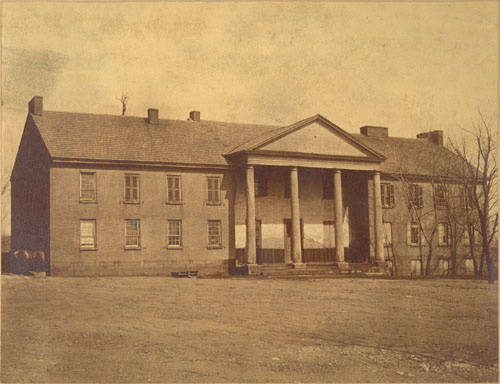|
Michael George Zabetakis
Michael George Zabetakis (7 July 1924 – 21 January 2005) was a fire safety engineering specialist. He received his PhD in chemistry from the University of Pittsburgh in 1956. In 1965 he published data for flammability limits, autoignition, and burning-rate data for more than 200 combustible gases and vapors in air and other oxidants, as well as of empirical rules and graphs that can be used to predict similar data for thousands of other combustibles under a variety of environmental conditions. The work remains one of the most widely cited sources of flammability data. Despite its age it was still in 1999 considered the standard reference.Drysdale 1999:75 Zabetakis often uses flammability diagram Flammability diagrams show the control of flammability in mixtures of fuel, oxygen and an inert gas, typically nitrogen. Mixtures of the three gasses are usually depicted in a triangular diagram, known as a ternary plot. Such diagrams are availab ...s to show flammable properties of ... [...More Info...] [...Related Items...] OR: [Wikipedia] [Google] [Baidu] |
Washington & Jefferson College
Washington & Jefferson College (W&J College or W&J) is a private liberal arts college in Washington, Pennsylvania. The college traces its origin to three log cabin colleges in Washington County established by three Presbyterian missionaries to the American frontier in the 1780s: John McMillan, Thaddeus Dod, and Joseph Smith. These early schools eventually grew into two competing academies, with Jefferson College located in Canonsburg and Washington College located in Washington. The two colleges merged in 1865 to form Washington & Jefferson College. The 60 acre (0.2 km2) campus has more than 40 buildings, with the oldest dating to 1793. The college's academic emphasis is on the liberal arts and the sciences, with a focus on preparing students for graduate and professional schools. Campus activities include various religious, political, and general interest clubs, as well as academic and professional-themed organizations. The college has a strong history of competing lite ... [...More Info...] [...Related Items...] OR: [Wikipedia] [Google] [Baidu] |
University Of Pittsburgh
The University of Pittsburgh (Pitt) is a public state-related research university in Pittsburgh, Pennsylvania. The university is composed of 17 undergraduate and graduate schools and colleges at its urban Pittsburgh campus, home to the university's central administration and around 28,000 undergraduate and graduate students. The 132-acre Pittsburgh campus includes various historic buildings that are part of the Schenley Farms Historic District, most notably its 42-story Gothic revival centerpiece, the Cathedral of Learning. Pitt is a member of the Association of American Universities and is classified among "R1: Doctoral Universities – Very high research activity". It is the second-largest non-government employer in the Pittsburgh metropolitan area. Pitt traces its roots to the Pittsburgh Academy founded by Hugh Henry Brackenridge in 1787. While the city was still on the edge of the American frontier at the time, Pittsburgh's rapid growth meant that a proper university was so ... [...More Info...] [...Related Items...] OR: [Wikipedia] [Google] [Baidu] |
Fire Safety Engineering
Fire protection engineering is the application of science and engineering principles to protect people, property, and their environments from the harmful and destructive effects of fire and smoke. It encompasses engineering which focuses on fire detection, suppression and mitigation and fire safety engineering which focuses on human behavior and maintaining a tenable environment for evacuation from a fire. In the United States 'fire protection engineering' is often used to include 'fire safety engineering'. The discipline of fire engineering includes, but is not exclusive to: * Fire detection - fire alarm systems and brigade call systems * Active fire protection - fire suppression systems * Passive fire protection - fire and smoke barriers, space separation * Smoke control and management * Escape facilities - emergency exits, fire lifts, etc. * Building design, layout, and space planning * Fire prevention programs * Fire dynamics and fire modeling * Human behavior during fi ... [...More Info...] [...Related Items...] OR: [Wikipedia] [Google] [Baidu] |
Mine Safety And Health Administration
The Mine Safety and Health Administration (MSHA) () is a large agency of the United States Department of Labor which administers the provisions of the Federal Mine Safety and Health Act of 1977 (Mine Act) to enforce compliance with mandatory safety and health standards as a means to eliminate fatal accidents, to reduce the frequency and severity of nonfatal accidents, to minimize health hazards, and to promote improved safety and health conditions in the nation's mines. MSHA carries out the mandates of the Mine Act at all mining and mineral processing operations in the United States, regardless of size, number of employees, commodity mined, or method of extraction. David Zatezalo was sworn in as Assistant Secretary of Labor for Mine Safety and Health, and head of MSHA, on November 30, 2017. He served until January 20, 2021. Jeannette Galanais served as Acting Assistant Secretary by President Joe Biden on February 1, 2021 until Christopher Williamson took office on April 11, 2022. ... [...More Info...] [...Related Items...] OR: [Wikipedia] [Google] [Baidu] |
Fire Safety Engineering
Fire protection engineering is the application of science and engineering principles to protect people, property, and their environments from the harmful and destructive effects of fire and smoke. It encompasses engineering which focuses on fire detection, suppression and mitigation and fire safety engineering which focuses on human behavior and maintaining a tenable environment for evacuation from a fire. In the United States 'fire protection engineering' is often used to include 'fire safety engineering'. The discipline of fire engineering includes, but is not exclusive to: * Fire detection - fire alarm systems and brigade call systems * Active fire protection - fire suppression systems * Passive fire protection - fire and smoke barriers, space separation * Smoke control and management * Escape facilities - emergency exits, fire lifts, etc. * Building design, layout, and space planning * Fire prevention programs * Fire dynamics and fire modeling * Human behavior during fi ... [...More Info...] [...Related Items...] OR: [Wikipedia] [Google] [Baidu] |
Flammability Limits
Mixtures of dispersed combustible materials (such as gaseous or vaporised fuels, and some dusts) and oxygen in the air will burn only if the fuel concentration lies within well-defined lower and upper bounds determined experimentally, referred to as flammability limits or explosive limits. Combustion can range in violence from deflagration through detonation. Limits vary with temperature and pressure, but are normally expressed in terms of volume percentage at 25 °C and atmospheric pressure. These limits are relevant both in producing and optimising explosion or combustion, as in an engine, or to preventing it, as in uncontrolled explosions of build-ups of combustible gas or dust. Attaining the best combustible or explosive mixture of a fuel and air (the stoichiometric proportion) is important in internal combustion engines such as gasoline or diesel engines. The standard reference work is still that elaborated by Michael George Zabetakis, a fire safety engineering special ... [...More Info...] [...Related Items...] OR: [Wikipedia] [Google] [Baidu] |
Autoignition
The autoignition temperature or kindling point of a substance is the lowest temperature in which it spontaneously ignites in a normal atmosphere without an external source of ignition, such as a flame or spark. This temperature is required to supply the activation energy needed for combustion. The temperature at which a chemical ignites decreases as the pressure is increased. *The ignition temperature of a substance is the lowest temperature at which the substance starts combustion. *Substances which spontaneously ignite in a normal atmosphere at naturally ambient temperatures are termed pyrophoric. Autoignition temperatures of liquid chemicals are typically measured using a flask placed in a temperature-controlled oven in accordance with the procedure described in ASTM E659. When measured for plastics, autoignition temperature can be also measured under elevated pressure and at 100% oxygen concentration. The resulting value is used as a predictor of viability for high-oxygen ... [...More Info...] [...Related Items...] OR: [Wikipedia] [Google] [Baidu] |
Combustible
A combustible material is something that can burn (i.e., ''combust'') in air. A combustible material is flammable if it ignites easily at ambient temperatures. In other words, a combustible material ignites with some effort and a flammable material catches fire immediately on exposure to flame. The degree of flammability or combustibility in air depends largely upon the volatility of the material - this is related to its composition-specific vapour pressure, which is temperature dependent. The quantity of vapour produced can be enhanced by increasing the surface area of the material forming a mist or dust. Take wood as an example. Finely divided wood dust can undergo explosive combustion and produce a blast wave. A piece of paper (made from wood) catches on fire quite easily. A heavy oak desk is much harder to ignite, even though the wood fibre is the same in all three materials. Common sense (and indeed scientific consensus until the mid-1700s) would seem to suggest that ma ... [...More Info...] [...Related Items...] OR: [Wikipedia] [Google] [Baidu] |
Oxidant
An oxidizing agent (also known as an oxidant, oxidizer, electron recipient, or electron acceptor) is a substance in a redox chemical reaction that gains or " accepts"/"receives" an electron from a (called the , , or ). In other words, an oxidizer is any substance that oxidizes another substance. The oxidation state, which describes the degree of loss of electrons, of the oxidizer decreases while that of the reductant increases; this is expressed by saying that oxidizers "undergo reduction" and "are reduced" while reducers "undergo oxidation" and "are oxidized". Common oxidizing agents are oxygen, hydrogen peroxide and the halogens. In one sense, an oxidizing agent is a chemical species that undergoes a chemical reaction in which it gains one or more electrons. In that sense, it is one component in an oxidation–reduction (redox) reaction. In the second sense, an oxidizing agent is a chemical species that transfers electronegative atoms, usually oxygen, to a substrate. Combust ... [...More Info...] [...Related Items...] OR: [Wikipedia] [Google] [Baidu] |
Flammability Diagram
Flammability diagrams show the control of flammability in mixtures of fuel, oxygen and an inert gas, typically nitrogen. Mixtures of the three gasses are usually depicted in a triangular diagram, known as a ternary plot. Such diagrams are available in the speciality literature.Crowl 2003 The same information can be depicted in a normal orthogonal diagram, showing only two substances, implicitly using the feature that the sum of all three components is 100 percent. The diagrams below only concerns one fuel; the diagrams can be generalized to mixtures of fuels. Understanding flammability diagrams Triangular diagrams are not commonplace. The easiest way to understand them is to briefly go through three basic steps in their construction. #Consider the first triangular diagram below, which shows all possible mixtures of methane, oxygen and nitrogen. Air is a mixture of about 21 volume percent oxygen, and 79 volume percent inerts (nitrogen). Any mixture of methane and air will the ... [...More Info...] [...Related Items...] OR: [Wikipedia] [Google] [Baidu] |
National Mine Health And Safety Academy
The United States National Mine Health and Safety Academy is a federal academy responsible for training the mine safety and health inspectors and technical support personnel of the Mine Safety and Health Administration. The Academy is located in Beckley, West Virginia, on an site near the Raleigh County Airport. The Academy complex consists of nine buildings: The Residence Hall, Administration Building, Classroom Building, Mine Machinery Laboratory Building, Publication Distribution Center, Gymnasium, Maintenance and Equipment Building, Mine Emergency Operations Building, Mine Rescue Station and Mine Simulation Laboratory. Students are exposed to a variety of different disciplines in nine different laboratories: roof control, ground control, mine emergencies and rescue, ventilation, electrical systems, machinery, industrial hygiene, computer systems and underground mine simulation. History In a five-year period from 1906-1911, 13,228 miners were killed in U.S. coal min ... [...More Info...] [...Related Items...] OR: [Wikipedia] [Google] [Baidu] |


